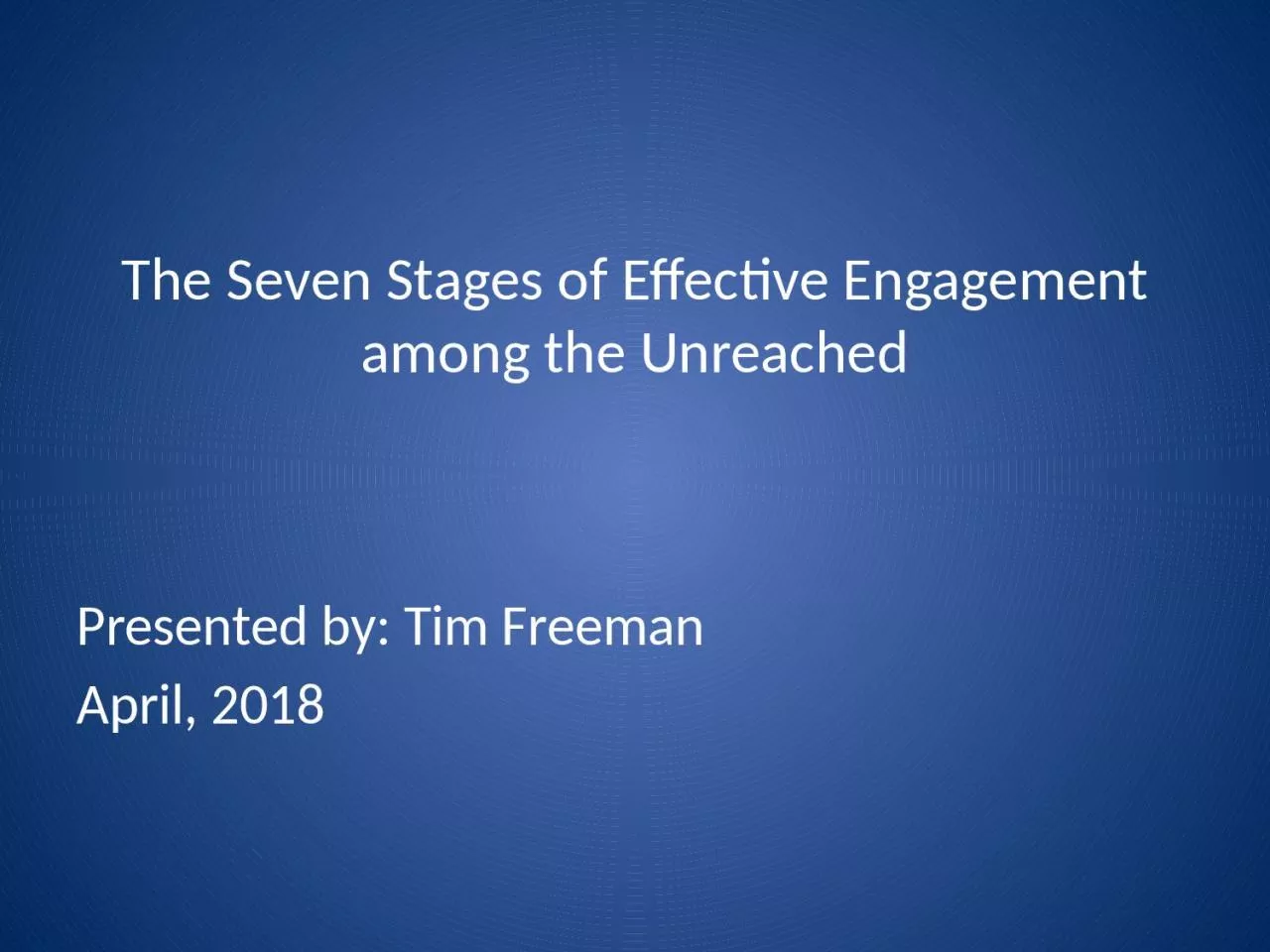PPT-The Seven Stages of Effective Engagement among the Unreached
Author : bethany | Published Date : 2024-03-13
Presented by Tim Freeman April 2018 Jesus commanded his followers to make disciples from among all people groups He promises his support as the Church undertakes
Presentation Embed Code
Download Presentation
Download Presentation The PPT/PDF document "The Seven Stages of Effective Engagement..." is the property of its rightful owner. Permission is granted to download and print the materials on this website for personal, non-commercial use only, and to display it on your personal computer provided you do not modify the materials and that you retain all copyright notices contained in the materials. By downloading content from our website, you accept the terms of this agreement.
The Seven Stages of Effective Engagement among the Unreached: Transcript
Download Rules Of Document
"The Seven Stages of Effective Engagement among the Unreached"The content belongs to its owner. You may download and print it for personal use, without modification, and keep all copyright notices. By downloading, you agree to these terms.
Related Documents














